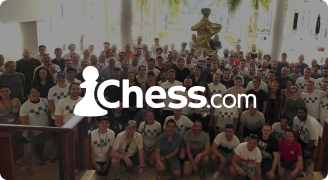Hire and manage employees in the United States
Hiring in the US? Rippling can help you grow your company globally by automating onboarding, payroll, calculating and filing taxes, staying compliant with local laws, and more on your behalf.
Avg Time to Hiring
Less than 5 minutes
Payroll Cycle
Weekly or biweekly
Time Zone
GMT-7, GMT-6, GMT-5, GMT-4

GLOBAL HIRING
Hire, manage, and pay employees
in the US with Rippling
Onboard US employees and contractors in 90 seconds
Set up new hires in the US with everything they need, from country-specific training to apps like Slack.
Pay your US team in USD—in minutes
Pay all of your employees and contractors around the world without waiting on transfers or conversions.
Automate your HR compliance work
Avoid costly compliance pitfalls using Rippling’s HR compliance support tools.
Manage HR, IT, and Finance in one system
Juggling multiple systems for your team? That creates silos and busy work. Rippling does it all—in a single system.
The essential guide to hiring in the US
In recent years, the number of US workers employed by international companies has been steadily rising. The US is home to a large, diverse, educated, and skilled workforce. If you’re looking to tap into it, you’re certainly not alone.
But hiring in the US for the first time can be daunting. There are a lot of moving pieces to keep track of, especially with regulations (like employment and labor laws) that vary so much from state to state.
This guide will cover what you need to know to hire your first employee in the US, from onboarding to employee work permits, complying with US labor laws, handling payroll and taxes, and beyond.
Employer structure
The first thing to do when hiring in the US is to determine what level of support your company will need to grow its US workforce. You have plenty of options; this just depends on what best aligns with your current business needs.
Rippling offers four levels: From most to least support, you can choose from a professional employer organization (PEO), an administrative services organization (ASO), or an employer of record (EOR) service. Here’s what each of these looks like in more detail.
Professional employer organization (PEO)
A PEO works by co-employing your workforce with your business. That means the PEO employs your US employees under its federal tax ID, which allows it to take over many of your manual, administrative HR functions, such as payroll services, benefits, and workers’ compensation. The PEO also handles all US employment tax registration and filing. Meanwhile, you keep control over hiring and firing, how much you pay your employees, and business strategy decisions (like R&D, marketing, and sales).
PEOs use their long-standing expertise, plus established workflows and technology, to streamline and automate those common HR processes. And because PEOs co-employ many employees from different organizations, they can use their economies of scale to negotiate access to better employee benefits for their clients, often at lower prices.
Since your company and the PEO co-employ your workforce, it’s common in the US for both parties to carry employer liability to varying degrees. In order to use Rippling PEO, you’ll need to have a US federal EIN, a US bank account, and a physical work address in the US, and you’ll need to comply with our PEO policies and terms of service.
Administrative services organization (ASO)
An ASO is similar to a PEO in that it offers businesses help with their manual, administrative HR functions, including benefits administration, HR compliance, payroll and tax administration services, and similar tasks. However, unlike a PEO, an ASO does not co-employ your workforce or take on any legal liability.
When you work with an ASO, you are the sole employer; you hire your US employees under your own federal EIN. Also, unlike a PEO, an ASO doesn’t help you access large-group employee benefits or workers’ compensation coverage. Instead, you can bring your own benefits or broker to the relationship.
In order to partner with Rippling ASO, you must have a US federal EIN, a US bank account, and a physical work address in the US. If you don’t have those things, an EOR may be a better option for your business.
Employer of record (EOR)
An EOR allows a business headquartered outside the US to hire in the States without having a US entity, federal employer identification number (EIN), US bank account, or work location address in the US. This is especially advantageous if you only plan to hire remote employees there.
The big benefit of an EOR is that it saves your business the time and hassle of establishing a legal entity in a new country but still allows you to hire and collaborate with employees while fully complying with local employment and tax laws.
Out of the four levels Rippling offers, an EOR provides the most support to your business. Rippling EOR takes on the responsibility of establishing its own legal entity in the US to hire employees on your behalf. We also handle all the legal requirements of employment, such as payroll, employment contracts, benefits administration (including 401(k) and health insurance plans), and taxes, while you manage employees’ day-to-day work.
Classifying US workers: employees vs. contractors
When you hire employees in the US, classifying them correctly is crucial. The Internal Revenue Service (IRS) takes this seriously, and the penalties can be harsh if you get it wrong.
Here are some of the ways US law differentiates between employees and independent contractors:
Contractors
Employees
Work can’t be essential to the business. Generally speaking, contractors in the US do not perform work that is central or integral to the business.
Can perform any work. Employees can perform any work, whether it’s integral to the business or a supportive role.
High level of control over their work. Contractors are considered self-employed and are free to decide when, where, and how they work.
More direction from their employer. Employees are typically supervised by a manager who can direct them on when and where to work (unless they’re on leave).
Less integrated. Contractors are more likely to work independently, off-site, and using their own tools and equipment.
Highly integrated. Employees are part of the workplace’s culture and day-to-day life. They are usually given the tools and equipment to perform their work by the company.
Less invested. Contractors generally do not make personal investments to help grow a business (though purchasing their own personal tools to do the job doesn’t count).
May have a financial stake or resources invested. Employees can invest money or resources into a company where they work to help it grow or succeed.
Provide their own equipment and tools. Contractors generally provide their own equipment and work tools.
Equipment and tools are provided by the employer. Employers generally provide computers, smartphones, and any other necessary tools to their employees.
No entitlement to benefits and few protections. Contractors aren’t entitled to benefits and aren’t protected by most employment laws that apply to employees in the US.
Entitled to benefits and protected by employment law. Where applicable, employees are entitled to certain benefits and protections under federal and state labor and employment laws (though these vary by location).
Non-exclusive services. Contractors can (and usually do) work for multiple clients simultaneously, even in the same industry.
Exclusive services. Employees are generally expected to render services exclusively to their employer and are typically prevented by their agreements from working for multiple employers at the same time.
Work lasts only for the duration of the contract. Contractors generally do not have work relationships that are continuous or lack a fixed end date.
Work is indefinite. Employees generally have indefinite work agreements.
Misclassifying US employees could result in employers being held liable for unpaid wages, overtime pay, and employment taxes (like social security and payroll taxes). Employers who violate classification rules may also be subject to fines from the US Department of Labor, IRS, and state agencies. Our free Worker Classification Analyzer can help you mitigate business risk by reviewing how your workers are classified in the US and across the globe.
Work permits for US employees
Can your new hire legally work in the USA? Answering this question before you proceed with the hiring process can help you avoid any legal headaches.
US immigration is complex, and anyone who isn’t a US citizen or permanent resident can’t legally work in the country without obtaining a visa and work authorization. With that being said, there are many different types of work permits in the US, granting eligibility both for temporary foreign workers and immigrants seeking permanent residence.
Below are some of the work visa types available in the US:
- Temporary non-immigrant visas:
- H-1B visas: For specialty occupations that require at least a bachelor's degree or its equivalent in a specific field.
- H-2A and H-2B visas: H-2A visas are for temporary agricultural workers from designated countries, whereas H-2B visas are for temporary non-agricultural workers.
- I visas: For representatives of the foreign media, including reporters, film crews, editors, and similar occupations.
- L visas: For members of global teams who are being temporarily transferred to a parent, branch, affiliate, or subsidiary of the same company in the US.
- O visas: For individuals with extraordinary abilities or achievements in the sciences, arts, education, business, athletics, or the motion picture and television industries who are coming to work for a US company in their field of expertise.
- TN visas: For Canadian and Mexican citizens coming to work in the United States in a qualifying professional occupation.
- E-3 visas: For Australian citizens who are working in a specialty occupation that requires at least a bachelor's degree or its equivalent in a specific field.
- Permanent (immigrant) work visas:
- First preference EB-1: For individuals with extraordinary abilities in the sciences, arts, education, business, or athletics through sustained national or international acclaim.
- Second preference EB-2: For professionals holding an advanced degree (beyond a baccalaureate degree) or a baccalaureate degree plus at least five years of progressive experience in their profession.
- Third preference EB-3: For skilled workers with at least two years of job experience or training, professionals with a baccalaureate degree, and other workers for unskilled labor that isn’t temporary or seasonal.
- Fourth preference EB-4: For "special immigrants," which includes a diverse group such as certain religious workers, those with US employment in foreign service posts, retired employees of international organizations, and foreign minors who are wards of courts in the United States.
- Fifth preference EB-5: For investors willing to invest a significant amount of capital in a new commercial enterprise in the US that will create or preserve at least 10 full-time jobs for qualifying US workers.
New hire onboarding checklist
Once you’ve confirmed that your new employee can legally work in the US, you can continue with the onboarding process. This is your chance to build a foundation that will set the stage for their entire tenure at your company, so it’s important to get it right.
A successful onboarding experience starts well before your new hire’s first day—and continues well beyond it—so make sure you’re considering more than just day one logistics. Follow this checklist to make sure each stage of onboarding is a success:
Before their first day
- Complete a background check (more on this later on).
- Send an offer letter (more on this in the next section).
- Do the necessary paperwork. Rippling has built-in tools to help you manage I-9 verifications and collect important payroll information like bank account details and W-4 withholding forms for taxes.
- Enroll them in benefits.
- Order and configure their devices.
- Set up their access to G-Suite, Slack, Microsoft 365, and any other apps and tools they need for their role.
- Prepare any required literature (like your employee handbook or compliance-related training materials).
- Assign them an onboarding buddy to show them the ropes.
On Day 1
- Complete the I-9 verification process by reviewing their identity and authorization-to-work documents.
- Onboard them to payroll to ensure their first paycheck won’t be delayed.
- Make sure their workspace is set up and ready to go.
- Send them a welcome email.
- Give them an agenda so they know what to expect on their first day.
- Schedule a 1:1 with their manager.
- Have a get-to-know-you event with their team.
- Show them around the office (and make sure they know where to find the most important things, like bathrooms and safety equipment).
During their first 90 days
- Provide general and role-specific training.
- Assign work and help them set goals as they ramp up.
- Schedule consistent check-ins (we recommend at least 30-, 60-, and 90-day check-ins).
- Offer regular feedback.
What to include in an offer letter in the US
The offer letter is a crucial part of onboarding a new employee; it outlines the conditions of employment, and you want to make sure they’re clear to avoid any later legal disputes. Here are some of the things you may want to consider including in an offer letter for a US employee to make sure it’s effective and clearly communicates what they should expect from their new role:
- Their job title, job description, and start date
- The name and role of their supervisor
- Their expected duties
- Their work hours (including whether their role is full-time or part-time)
- Their salary and payment schedule
- A brief description of their benefits (but avoid going into detail here so the offer letter doesn’t need to be updated if their benefits change)
- Any other details relevant to your company culture
- Your termination policies, including a note that at-will employment means either party can end the agreement at any time and for any reason and that the offer letter does not constitute an employment contract
Note that some states have additional requirements for offer letters, like stating whether the position is subject to minimum wage laws.
NDAs and confidentiality agreements in the US
A non-disclosure agreement (NDA) is a legally binding contract that prevents one or multiple parties in the agreement from sharing confidential information. NDAs are also known as confidentiality agreements, confidentiality disclosure agreements, and non-disclosure contracts.
In the US, NDAs are legally enforceable and common in most business settings. Companies can use NDAs to protect all kinds of business information, including:
- Customer information
- Financial information
- Intellectual property
- Marketing information
- Operational information
- Trade secrets
NDAs can be written so that even accidental breaches are covered, and breaking an NDA can result in a host of ramifications, from termination of employment to lawsuits, financial penalties, or even criminal charges.
However, while NDAs are powerful tools, they must be written and executed correctly. Businesses also have a responsibility to use NDAs appropriately and ethically.
Running background checks on US employees
Background checks are allowed under federal and state law in the US. And they’re an important part of the hiring process to verify your new employee’s credentials and protect your company from the risk of potential threats. That’s why most businesses choose to run background checks even though they aren’t mandatory. However, in the US, there are rules you need to follow to keep your background checks on the right side of the law.
To start, you must get written permission from the employee before running a background check from a background reporting company.
You also must treat all employees and applicants the same when asking about their backgrounds with regard to:
- Race
- National origin
- Color
- Sex (including pregnancy, sexual orientation, gender identity, and transgender status)
- Religion
- Disability
- Genetic information (including family medical history)
- Age (if they’re 40 or older)
For example, it’s illegal to ask a candidate for more background information because they’re of a different race than another candidate.
It’s also against the law to ask candidates for private social media information. For example, you can look at their public LinkedIn profile, but you can’t ask them to log in for you so you can see the information they have hidden from public view. You also can’t ask them about their medical information, except in certain limited circumstances after you’ve offered them a job.
Some states have laws impacting when or if you can run a background check on a candidate’s criminal or financial/credit history. If criminal background checks are allowed in your state, don’t tell candidates not to apply for a job if they have a criminal record; this could be employment discrimination.
Here are some of the common and less common background checks companies use when hiring US employees:
Common background checks
Less common background checks
Employment history
Public social media activity
Education
Medical information (only allowed in limited circumstances after a job offer is made)
Criminal records (depending on state laws)
Financial or credit history (depending on state laws)
Other public records
Rippling has an integration with Checkr, which can perform background checks on your company’s behalf.
Paying employees in the US
Payroll and taxes are unique in the US because the tax burden varies depending on the state in which you hire. That means it can be incredibly time-consuming to identify and establish all the state and local employment tax accounts you need for your new employee, which is why you need payroll software that does it for you. Rippling automatically withholds and remits filings and payments to the right tax agencies at the right times, helping your business avoid potentially costly compliance mistakes and freeing up your time to focus on work that helps your company succeed.
Employer costs
These are the taxes employers must pay when they hire US employees. The tax rates are a percentage of the employee’s earnings.
Cost to employers
Tax
Social Security
6.2% of the first $168,600 of the employee’s earnings
Medicare
1.45%
Federal unemployment tax
0.6% of the first $7,000 of the employee’s earnings (up to 6%)
State unemployment tax
Varies by state and employer claims history (0.11 to 7%, with most new businesses in the 2-3% range)
Employer costs
These are the taxes employers must pay when they hire US employees. The tax rates are a percentage of the employee’s earnings.
Cost to employees
Tax
Federal income tax
10% to 37%, depending on the employee’s income and marital status
State income tax
Varies by state
Local taxes
Varies by location
For more information on state and local taxes, see our payroll tax guides for each state:
- Alabama
- Alaska
- Arizona
- Arkansas
- California
- Colorado
- Connecticut
- Delaware
- Florida
- Georgia
- Hawaii
- Idaho
- Illinois
- Indiana
- Iowa
- Kansas
- Kentucky
- Louisiana
- Maine
- Maryland
- Massachusetts
- Michigan
- Minnesota
- Mississippi
- Missouri
- Montana
- Nebraska
- Nevada
- New Hampshire
- New Jersey
- New Mexico
- New York
- North Carolina
- North Dakota
- Ohio
- Oklahoma
- Oregon
- Pennsylvania
- Rhode Island
- South Carolina
- South Dakota
- Tennessee
- Texas
- Utah
- Vermont
- Virginia
- Washington
- West Virginia
- Wisconsin
- Wyoming
Mandatory employee benefits in the US
The US has fewer mandatory benefits requirements for employers than most other developed countries around the world. Here’s what you need to know.
Health insurance
Under the Affordable Care Act, applicable large employers or ALEs (those with 50 or more full-time or full-time equivalent employees) must provide affordable healthcare coverage to at least 95% of their full-time employees and their dependent children. To meet the federal mandate, policies must cover at least 60% of employees’ healthcare costs, and employees can’t pay more than 9.86% of their household income for care.
Small businesses with fewer than 50 full-time or full-time equivalent employees aren’t required to offer coverage.
Social Security and Medicare
Both employers and employees contribute taxes to Social Security, a nation-backed retirement fund, and Medicare, a public health insurance program for Americans over the age of 65.
Social Security also funds programs that provide income for people who can’t work due to disability and survivor benefits for dependents of people who have died.
Unemployment insurance
Unemployment insurance provides supplemental income for people who have lost their jobs. Employers must contribute to the federal fund but may be exempt from most of their contributions if they pay into state unemployment insurance funds instead.
Family and medical leave
The Family and Medical Leave Act (FMLA) guarantees qualifying employees up to 12 weeks of job-protected, unpaid leave each year for certain family and medical reasons, such as:
- Caring for a newborn
- Adopting a child
- Recovering from an illness
- Caring for a sick family member
There is no federal law that mandates paid time off for US employees, but several states, including California, New York, and Washington, have implemented their own leave laws with varying requirements.
Supplemental benefits
While few benefits are required for US employees, many are standard for employers to offer to help them attract the best talent. These are some common parts of a benefits package for a full-time employee in the US:
- Retirement plans
- Healthcare
- Vision and dental coverage
- Paid time off
- Paid sick leave
- Paid family leave
- Equity benefits (such as stock options, restricted stock, or performance shares)
- Paid days off on public holidays
Computers and apps for employees in the US
If it’s your first time hiring in the US, it can be tricky to manage all of your employees’ devices when they’re working remotely. There’s so much to keep track of: from delivering equipment to protecting and updating it from afar, not to mention creating a repeatable process across your international team.
Rippling can help you instantly set up and secure employees’ accounts from day one. Read about setting up and managing remote employee devices overseas in our guide.
Protecting company IP in the US
As your new employees gain access to company accounts and sensitive information, it’s essential to know how to protect your intellectual property (IP). In the US, there are several ways to obtain exclusive rights to IP you create, especially when it comes to commercial gains resulting from its use:
- Copyright: Protect tangible and intangible creative works without formal registration, though it’s easier to protect your ownership if you register your works.
- Trademarks: Protect symbols, designs, logos, catchphrases, etc., that businesses use for marketing, strategy, identity, and differentiating themselves from competitors. Trademarks are registered with the US Patent and Trademark Office (USPTO).
- Patents: Protect inventions of unique products, machines, equipment, chemical compositions, and more. And prevent others from making, distributing, or filing for them unless you give them a license to do so. Patents are registered with the USPTO.
When you give employees access to trade secrets that you don’t want to become public, you can ask them to sign a confidentiality agreement. Common confidentiality agreements in the US include:
- Non-disclosure agreements (NDAs)
- Confidential disclosure agreements (CDAs)
- Proprietary information agreements (PIAs)
- Secrecy agreements (SAs)
These types of agreements state that all parties agree to keep confidential information private. If they don’t, they face consequences outlined in the agreement, which could include termination, fines, lawsuits, and other penalties.
Labor law and compliance for employees in the US
Labor and employment law compliance in the US can be tricky. In addition to federal laws, each state can have varying laws that employers need to follow based on where their employees live and work. Here are a few key regulations to know:
- Wages and hours: Under the federal Fair Labor Standards Act, qualifying employees are entitled to the federal minimum wage of $7.25 per hour plus overtime of 1.5 times their regular pay rate if they work more than 40 hours in a workweek. While states, counties, and cities cannot enact laws with minimum wages lower than the federal rate, they can enact minimum wages that are higher—and many have done so.
- Workplace health and safety: The Occupational Safety and Health (OSH) Act is administered by the Occupational Safety and Health Administration (OSHA) and a number of OSHA-approved state programs. It requires employers to follow standards for keeping their workers safe and healthy, including protecting them from recognized, serious hazards.
- Workers’ compensation: Workers’ compensation insurance provides income support and covers medical expenses for people who can’t work due to a job-related illness or injury. Federal workers’ compensation programs exist for federal employees and employees in the longshore, energy, and mining sectors. For other employees, businesses typically pay workers’ compensation taxes to the state where the employee lives; rates and requirements vary by state.
- Labor unions: The National Labor Relations Act gives all employees the right to unionize, bargain collectively with their employer, strike or picket, or choose not to participate in any of these activities. The Act also makes it illegal for a union or an employer to threaten or harass an employee for choosing to participate or not
Offboarding employees in the US
Requirements
As in many other countries, terminations in the United States can be tricky. Although most states recognize the “at-will” employment relationship, employees, in many cases, still have the right to retain a lawyer and potentially file a claim against the company for unlawful termination. Regardless of the validity of the claim, organizational time and resources will be spent in dealing with it.
The United States is one of the most litigious countries for employee claims and has some of the highest settlement and trial awards, so the cost of non-compliance can be steep. Settlements/trial awards can be in the seven or eight figures for particularly egregious claims in states like California, which is the most employee-friendly state. And many states don’t have statutory caps on damages for harassment/discrimination/retaliation claims.
Rippling EOR can ensure that performance management, documentation, termination, and final pay best practices are followed to reduce organizational liability and the chance of a subsequent claim.
Severance
Following US best practices, US employers often offer severance to involuntarily terminated individuals in exchange for executing a waiver and release agreement.
Disclaimer: Rippling and its affiliates do not provide tax, legal, or accounting advice. This material has been prepared for informational purposes only, and is not intended to provide, and should not be relied on for, tax, legal, or accounting advice. You should consult your own tax, legal, and accounting advisors before engaging in any related activities or transactions.

















